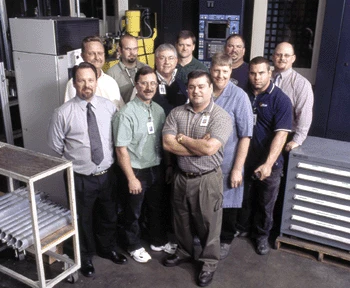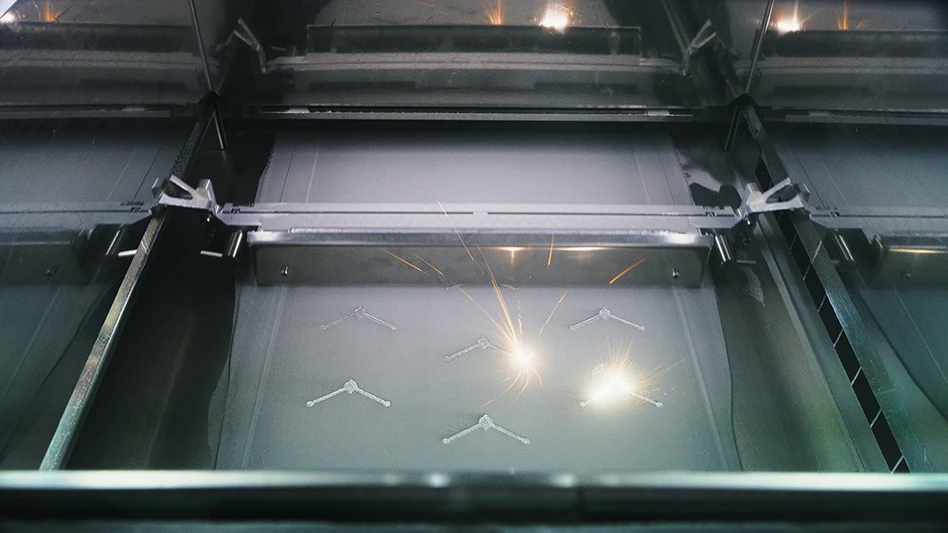
Most people prefer to think of a trip to the dentist as little as possible. While it's still not going to make many lists of favorite ways to spend an afternoon, visiting the dentist has become a much less unpleasant experience over the relatively recent past. In large, this can be attributed to the efforts of companies like A-dec, a manufacturer who has spent the past forty years devising solutions to maximize the comfort of dentists and their patients.
Founded in 1964 by Ken and Joan Austin, A-dec began by offering a single product. A true innovation at the time, the AVS (Air Vacuum System) performs high-speed evacuation of water and debris from a patient's mouth. The original design proved so reliable that A-dec still sells 400 of the units on an annual basis.
The success of the AVS propelled A-dec's growth, allowing for further innovations. Today the company maintains its position as the largest dental supplier in North America by focusing primarily on ergonomic issues. With its latest product, the A-dec 500 dental chair system, the company reexamined every aspect of chair design to maximize patient comfort and eliminate factors that often lead to spinal and vascular problems in dentists.
Throughout the creation of the A-dec 500, the company encountered a plethora of manufacturing challenges. One of the first of these arose in the form of the newly designed base plate of the chair. The engineers at A-dec focused on giving the baseplate a smaller footprint. This provides dentists the ability to work closer to their patients without having to bend at the waist which can lead to fatigue and, over an extended period of time, spinal problems.
"The new baseplate was really a radical shift," says A-dec senior programmer Brian Cappoen.
"The old base was an aluminum part weighing 37 lbs. To get the stability we needed with the smaller footprint, we did a complete re-design changed to a cast iron part weighing 120 lbs. The new part design gave us huge machining problems with reaches and reliability."
While examining the best process to machine the job, A-dec contacted Sandvik Coromant to come in and offer a fresh perspective. Sandvik Coromant salesperson Greg Pope examined the part and immediately suggested use of the Coromant Capto modular toolholding system. The innovative Capto product can be used to dramatically increase the reach of tooling without sacrificing speed or accuracy.
"By stretching out the Capto and then putting a hydrogrip chuck at the end, we were able to get to where we needed to be on tool length," explains Cappoen. "With the Coromant Capto coupling, we have drills that are hanging out 18" that are holding tolerances of .001". Also, it's small enough that we're able to get through narrow passages in the fixtures to reach where
we need to be."
With the initial design and process challenges out of the way, the A-dec 500 was moved into full production. As demand for the product grew, A-dec's engineers focused on improving efficiency to accommodate increased production. Required part quantities grew steadily and by March of 2004, many at A-dec felt the company was running at full machine capacity.
"A lot of the guys on the floor were telling me that we had to get more machines to keep up with demand," says Tony Getsinger, machining manager at A-dec. "In the spring of 2004, Mike Abberley, the president of Sandvik came in to give a presentation on the economics of manufacturing and asked me if I had any pressing issues they could look at. I told him absolutely."
At that point A-dec opted to participate in a Sandvik Coromant PIP (Productivity Improvement Program). Specialists from Sandvik Coromant spent a week at the facility, working with machinists at A-dec to gather thorough data on parts that were contributing to bottlenecks. Several weeks later, members of the team returned with their findings and recommendations on over a dozen parts.
One particularly troublesome job consisted of an upper structure chair component for the A-dec 500. Out of the 17 tools required to complete this part, two tools were huge time consumers. An end mill was used for the lengthy process of roughing the part out and applying the finishing pass. A second, specialized tool then put a pocket into the part. The part originally ran with a total cycle time of 40 minutes. A-dec's programming team had managed to refine the process and cut cycle time to 28 minutes, but this still proved too time-consuming.
The Sandvik Coromant PIP report suggested using a CoroGrip precision toolholder combined with a Coromill plura endmill to allow for increased feeds and speeds. A-dec implemented the recommended tooling, raised feed rates from 30 ipm to 60 ipm and the part's total cycle time fell to just over 11 minutes, reflecting a time savings of over 60%.
Other solutions in the PIP report proved equally beneficial. After nine months of integrating the team's recommendations, A-dec estimates that on an annual basis close to 4,000 machining hours have been eliminated from their processes. Weekly production runs have grown by 50% since the spring of 2004, the point when many within the company had felt operations had reached full machining capacity. This has been achieved solely through tooling changes, without the addition or replacement of any machines.
The benefits of adopting a partnership mentality with a tooling supplier have not been limited to suggestions made in the PIP report. On one occasion, Sandvik Coromant salesperson Greg Pope observed a job where a .016" face cut was being performed on a brass part that was loaded onto four sides of a tombstone. He suggested replacing the facemill being used with the CoroMill 590 and diamond inserts.
"We'd been running at 4,000 rpm and 40 ipm to achieve the minimum surface finish the part required, which was 32 µm," recalls Cappoen. "One day Greg brings in the CoroMill 590 and, with a grin on his face, cranks the machine up to 14,000 rpm and 300 ipm. The only problem was that it had too fine of a surface finish. We increased the feed rate to 1,000 ipm to bring the finish back up to 20 µm, and now that process runs in 20 seconds. It used to take 2 minutes and 40 seconds."
Improvements in machining processes have allowed A-dec to maximize efficiency and minimize costs, while experiencing steady growth. In 2004, sales grew by 24% and continued growth is expected. A-dec credits Sandvik Coromant with helping to meet increasing production demands.
"Our business is to design and produce the best dental products we can," explains Getsinger. "To excel, that has to be our primary focus. We help keep that focus by doing business with companies that are experts in their field. When Sandvik Coromant comes in and shares their knowledge base to maximize our operations, it really helps keep our efforts centered around providing the best products possible."
A-dec is currently participating in their second PIP with Sandvik Coromant. As the company continues to grow in the world market, the ability to rely on the expertise of its business partners will prove an asset of ever-increasing value. TMD

Explore the November 2005 Issue
Check out more from this issue and find your next story to read.
Latest from Today's Medical Developments
- HERMES AWARD 2025 – Jury nominates three tech innovations
- Vision Engineering’s EVO Cam HALO
- How to Reduce First Article Inspection Creation Time by 70% to 90% with DISCUS Software
- FANUC America launches new robot tutorial website for all
- Murata Machinery USA’s MT1065EX twin-spindle, CNC turning center
- #40 - Lunch & Learn with Fagor Automation
- Kistler offers service for piezoelectric force sensors and measuring chains
- Creaform’s Pro version of Scan-to-CAD Application Module





